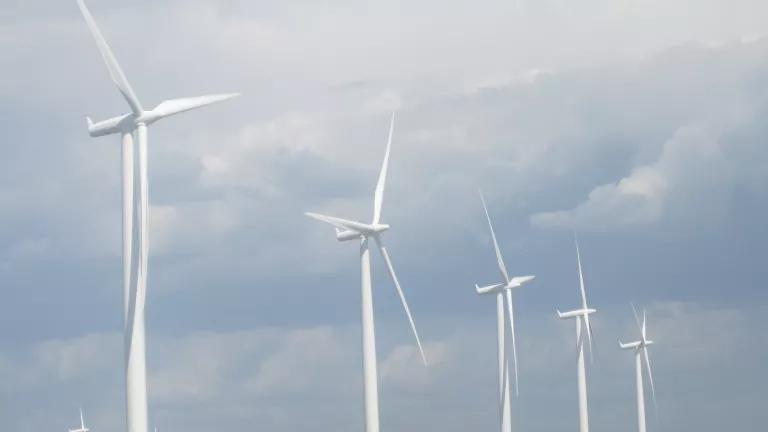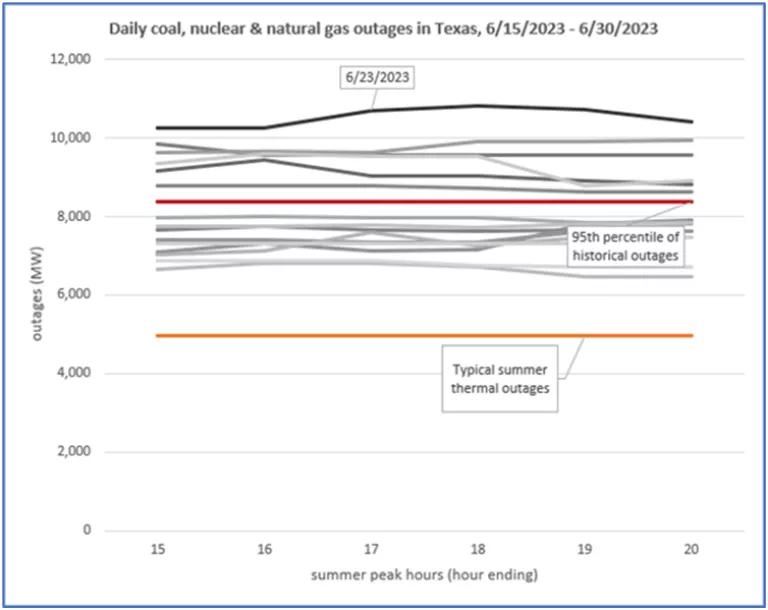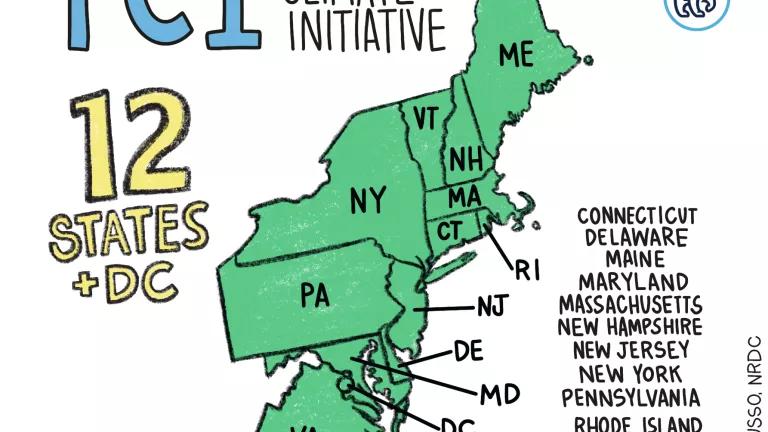Renewables and Storage Hold Their Own in the Texas Heat Dome
No fossil fuels, no problem? Texas investments in wind and solar pay off, generating record-breaking renewable power to meet all-time high electricity demand during nearly 10-day heat dome—despite fossil fuel plant failures.

Billy Hathorn, CC BY-SA 3.0, via Wikimedia Commons
For weeks, a wave of extreme heat has blanketed Texas and other parts of the South. This heat dome, with temperatures as high as 118 degrees in some parts of the state, is part of a concerning, consistent trend in extreme temperatures. These once-rare occurrences are now a norm that threatens people and communities.
The fitness of Texas’s power grid, largely isolated from the rest of the country, will determine the scale of heat-induced illnesses, emergency room visits, and deaths for years to come. But at this moment, renewable energy and storage are helping Texans weather the storm, providing relief and safety to millions.
According to Texas’s grid operator, the Electric Reliability Council of Texas (ERCOT), power use hit an all-time high last week as demand for air-conditioning soared. ERCOT said it expects that record to be surpassed again. During that time, wind, solar, and storage have contributed an extraordinary share of the state’s energy supply—at one point, renewables met nearly half of Texas’s load last week.
In contrast, Texas coal and gas started off the summer with significantly higher outages than what is “typical” for peak summer hours, according to ERCOT. Thermal outages were consistently trending toward sustained high risk in the last two weeks of June.

Source: Seasonal Assessment of Resource Adequacy for the ERCOT Region (SARA) Summer 2023; ERCOT Hourly Outage Capacity report
NRDC
As daily electricity demand has climbed up to very high levels during the prolonged heat wave, renewables have kept pace, consistently meeting or exceeding the ERCOT forecast.
This is no accident. Texas’s renewable footprint has steadily grown in recent years, triggering recent attacks in the Texas legislature from fossil fuel boosters who sought to kneecap wind and solar development in the state for the sake of expanding oil and gas production. According to an estimate from the North American Electric Reliability Corporation (NERC), Texas has added more than 4 gigawatts (GW) of solar since last summer. And according to Grid Status, more than 15 percent of ERCOT’s power generation came from solar alone during most afternoon hours, often making solar the second-largest source of electricity production.
Texas has doubled its solar generation already this year and is set to do so again by the end of next year, according to ERCOT. This is the time to continue these investments, not pump the brakes for the sake of politics.
Storage is booming too. According to S&P Global Commodity Insights, Texas has nearly a third of the nation’s storage capacity. It also plans to double its battery storage within the next year.
Recent reporting has highlighted the failures of coal and gas resources during extreme weather, which has caught the attention of NERC, the nation’s grid monitor. In its 2023 State of Reliability Report, NERC wrote: “Conventional generation, challenged by more frequent extreme weather, experienced its highest level of unavailability overall since NERC began gathering generator availability data in 2013.” We already know that gas and coal plants can suffer in extreme cold weather. The complex machinery of fossil plants can freeze, gas delivery systems can fail, and customers buying gas for home heating often get first dibs on scarce gas fuel during cold weather.
Recall Winter Storm Uri in February 2021, when millions were left without power and at least 246 people died, mostly in Texas. Throughout the state and surrounding area, 604 gas power plants suffered outages and lower power output during Uri, representing far more megawatts than any other type of power plant.
Winter is no longer our only worry. As climate change fuels increasingly hot summers, the rising heat will force more fossil fuel power plants to shut down or run at reduced capacity than in previous years. Thankfully, solar can pick up the slack, and storage will grow significantly in the next several years.
This isn’t to say that renewable energy is infallible; after all, many wind turbines also froze during Uri. And solar doesn’t work when the skies are dark or at night, and wind doesn’t produce when the wind isn’t blowing. But they are complementary—wind often blows strongest at night and least during the day, when solar energy is producing the most power. Plus, both share a “priceless” attribute not found with fossil power: their fuel source of sun and wind energy is free.
How should Texas reduce its risks in the future? First, it should embrace rather than resist renewable energy and storage. It has rich wind and solar energy resources and can help to grow new clean tech industries.
Texas would also do well to consider connecting its grid to the rest of the country. Most of the Texas grid is disconnected from the rest of the country, driven by a misplaced fear of federal jurisdiction. The reality is that an interconnected grid will save lives, reduce the risk of crippling economic damage, and lower power costs.
Connecting Texas to the rest of the country would allow Texans to benefit from power imports from other parts of the country during extreme weather. And vice versa; Texas’s plentiful clean energy resources could support other regions of the country when they face weather emergencies.
The reality is that extreme weather is only going to get worse; indeed, July 3 was the hottest day ever recorded on earth. Gas and coal will either continue to fail to meet demand or will become extraordinarily costly to protect against failure while continuing to fuel the very climate change contributing to extreme weather. Now is the time for Texas to seize the moment and lean into the transition to renewable power that keeps the lights on for all Texans.




